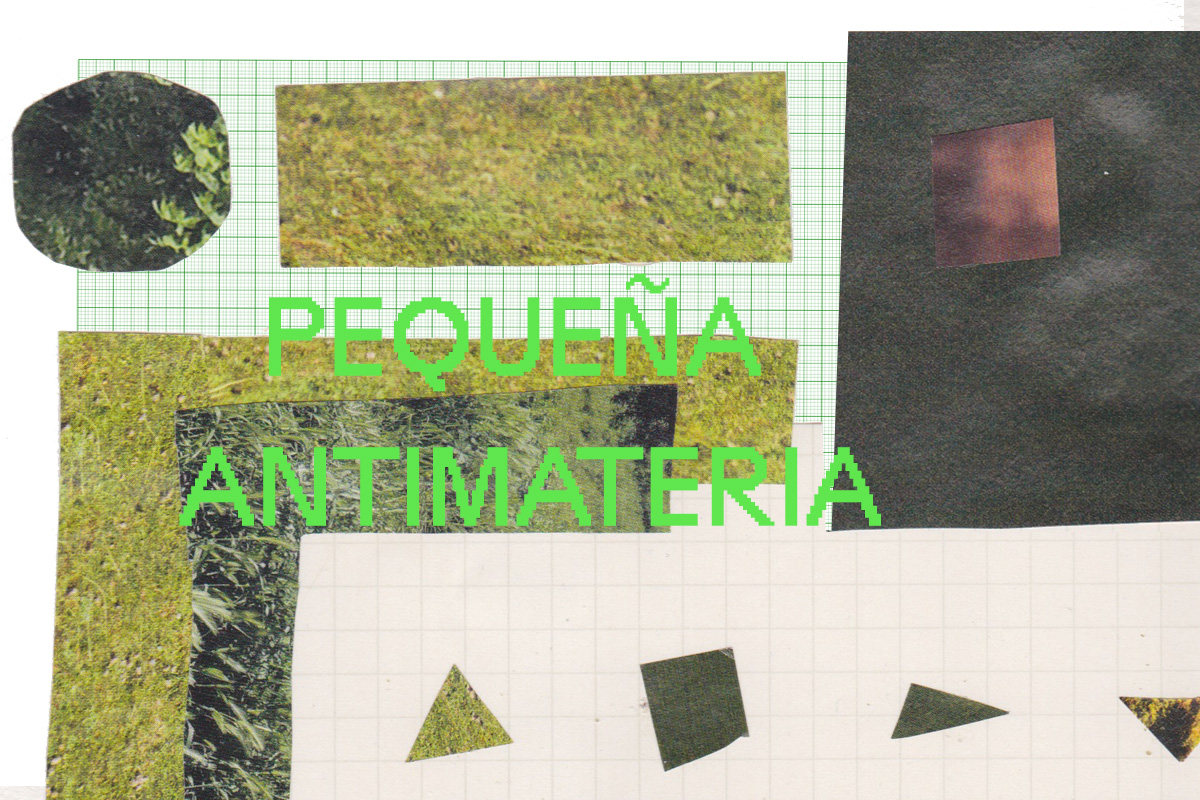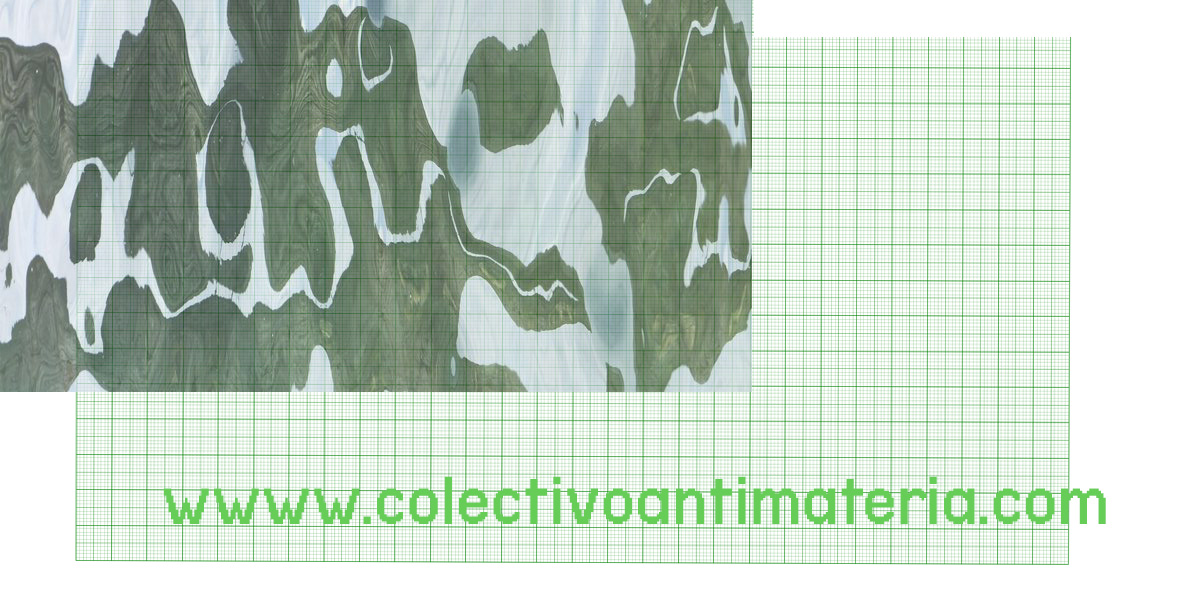
Pequeña Antimateria is the newsletter of Colectivo Antimateria. With a classic format in which each guest shares four things, on a bimonthly basis and in bilingual English/Spanish, Pequeña Antimateria is an enthusiastic, constructive, anti-ageist, and feminist space where we can expand and transcend the limitations of the algorithm.
Pequeña Antimateria es la newletter del Colectivo Antimateria. Con un formato clásico en el que cada invitado comparte cuatro cosas, de manera bimestral y en inglés/español bilingüe, Pequeña Antimateria es un espacio entusiasta, constructivo, anti-edadista y feminista donde ampliar y trascender las limitaciones del algoritmo.
Pequeña Antimateria es la newletter del Colectivo Antimateria. Con un formato clásico en el que cada invitado comparte cuatro cosas, de manera bimestral y en inglés/español bilingüe, Pequeña Antimateria es un espacio entusiasta, constructivo, anti-edadista y feminista donde ampliar y trascender las limitaciones del algoritmo.

Luciana Varkulja is an architect, urban designer, researcher, and educator. She is the founder and principal of uma architecture & design, a design and research practice, collaborating with projects in Latin America, Africa, and the US. Varkulja’s research is focused on how architects and designers can learn from food systems and forestry management practices, engaging in a more sustainable approach during the design process through a responsible choice of materials, labor conditions, and a deeper knowledge of the supply chain. She is currently a Senior Lecturer at Otis College of Arts and Design, in Los Angeles.
Insta: @lvarkulja
*******
Luciana Varkulja es arquitecta, urbanista, investigadora y educadora. Es fundadora y directora de uma architecture & design, un estudio de diseño e investigación que colabora en proyectos en América Latina, África y Estados Unidos. La investigación de Varkulja se centra en cómo los arquitectos y diseñadores pueden aprender de los sistemas alimentarios y las prácticas de gestión forestal, participando en un enfoque más sostenible durante el proceso de diseño a través de una elección responsable de materiales, condiciones laborales y un conocimiento más profundo de la cadena de suministro. Actualmente es Profesora Titular en el Otis College of Arts and Design, en Los Ángeles.
Insta: @lvarkulja


ITEM #1: Houses demolition
I have been documenting in the city of São Paulo, how the landscape has been rapidly changing as older houses and smaller-scale buildings are being demolished for the construction of high-end residential towers, in various neighborhoods. This demolition trend represents the erasure of historical and cultural narratives embedded within the city's fabric, and it underscores the balance between urban development and the preservation of heritage, raising questions about the city's identity and the values it prioritizes.
+++++
He estado documentando en la ciudad de São Paulo cómo el paisaje ha estado cambiando rápidamente en varios barrios a medida que las casas antiguas y los edificios de menor escala están siendo demolidos para la construcción de torres residenciales de alta gama. Esta tendencia de demolición representa el borrado de narrativas históricas y culturales incrustadas dentro del tejido urbano de la ciudad, y subraya el frágil equilibrio entre el desarrollo urbano y la preservación del patrimonio, planteando preguntas sobre la identidad de la ciudad y los valores que prioriza.

ITEM #2 The FAU USP Building
The transition from traditional drawing boards to digital technology at the Faculty of Architecture and Urbanism (FAU) of the University of São Paulo (USP), designed by Vilanova Artigas in 1969, marks a significant change in architectural education and practice. The FAU building, with its bold structural expression and elements, and its flexible open spaces, serves as a testament to modernist principles and I am personally curious how that change has been affecting the building space to adapt it to the new technological advancements. The main entry bench is still where the tired students can rest or take a well-deserved nap, as it has been for the past 55 years.
+++++
La transición desde las mesas de dibujo tradicionales a la tecnología digital en la Facultad de Arquitectura y Urbanismo (FAU) de la Universidad de São Paulo (USP), diseñada por Vilanova Artigas en 1969, marca un cambio significativo en la educación y práctica arquitectónica. El edificio de la FAU, con su expresión estructural audaz y sus espacios abiertos flexibles, sirve como testamento a los principios modernistas. Personalmente tengo curiosidad por ver cómo ese cambio ha estado afectando el espacio del edificio para adaptarlo a los nuevos avances tecnológicos. El banco principal de entrada sigue siendo donde los estudiantes cansados pueden descansar o echar una merecida siesta, como ha sido durante los últimos 55 años.

ITEM #03 Trees on the Road
During a research trip to the Atlantic Rainforest in Brazil, I saw these trees lining the road, their roots exposed, weaving intricate patterns in the earth. It was as if nature had unveiled its ancient secrets, inviting you into a place where time moves slower and wisdom lingers in the air…The sight of these exposed roots evoked a sense of wonder and reverence as if they were there to remind us of the profound connection between all living things and Gaia.
+++++
Durante un viaje de investigación a la Mata Atlántica en Brasil, vi estos árboles bordeando la carretera, con sus raíces expuestas, tejiendo patrones intrincados en la tierra. Era como si la naturaleza hubiera revelado sus antiguos secretos, invitándote a un lugar donde el tiempo se mueve más lento y la sabiduría perdura en el aire... La vista de estas raíces expuestas evocaba un sentido de asombro y reverencia, como si estuvieran ahí para recordarnos la profunda conexión entre todos los seres vivos y Gaia.

ITEM #04 Urban trees
“Our cities need to experience the spider’s gesture, the touch on the ‘hard body’ of the city through the forest. I have always looked to the city for its function as a wall. But this function avoids the spider's movement, and it also impedes the movement of the leaf, of the roots. It is common in cities to get irritated with the trees that split and break the sidewalks. I would like to summon all trees and branches to break the city's sidewalks, indeed.” Ailton Krenak
+++++
"Nuestras ciudades necesitan experimentar el gesto de la araña, el toque en el 'cuerpo duro' de la ciudad a través del bosque. Siempre he visto en la ciudad su función como muro. Pero esta función evita el movimiento de la araña, y también impide el movimiento de la hoja, de las raíces. Es común en las ciudades irritarse con los árboles que rompen y fracturan las aceras. Me gustaría convocar a todos los árboles y ramas para que rompan las aceras de la ciudad, de hecho." Ailton Krenak
Ailton Krenak interview
insta: @_ailtonkrenak
